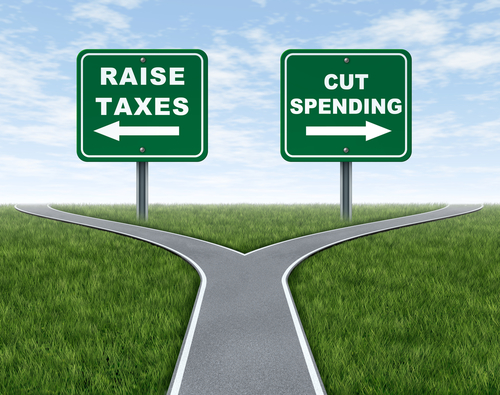Impacted by the COVID-19 pandemic, the budget deficits of advanced economies are projected to reach 15 percent of GDP on average this year. Debt, already high, is set to increase by more than 20 percent of GDP. What can and should be done to fix public finances after the pandemic is over?
The last thing the world economy needs is a post-pandemic austerity crusade to rapidly cut debt. But exceptionally high levels of government debt are dangerous in the long term. So fiscal consolidation will be required at some point. The question is when, and how fast.
It is easy to make out a case for gradualism. Today’s spectacularly high deficits are inherently temporary and will fall naturally as economies recover. The increase in debt won’t cause budgetary difficulties as long as interest rates remain low. Many economists think that structural forces will keep rates low for a long time to come, even after central banks stop flooding their economies with money. Consider the example of the US: if post-pandemic interest rates remained at the levels of the last ten years, an increase in government debt of 30 percent of GDP would increase government interest outlays by only about half a percent of GDP. This is why there is a persuasive case for relying on post-pandemic economic growth to gradually reduce the debt/GDP ratio over several decades. And if this isn’t enough, a one-off wealth tax could be used to pay off the pandemic-induced debt increment – while still avoiding austerity.
Unfortunately, however, restoring public finances is not quite as easy as that. This is because the problem is not just the debt position. It is structural budget deficits, which most advanced countries have been running for some time. Many – including the United States and the United Kingdom – have in fact run significant primary deficits for at least the past decade. But what makes the structural deficit particularly problematic is the fact that powerful spending pressures risk pushing budgets far more deeply into the red over coming decades.
The immediate spending pressures are clear enough: strengthening the capacity of healthcare to deal with crises like the pandemic, and the fight against climate change. What is less well understood is the magnitude of the long-term spending pressures which face governments in all advanced countries. As outlined in my book Bigger Government, healthcare is the biggest. Here, the long-term pressures have little to do with the pandemic. The most important is the way in which spending will be driven upwards by the rapidly-expanding technological capabilities of medicine, exemplified by high-tech precision and customized medicine. Technology has long been the main driver of health expenditure. Its impact on spending will be even greater in future because of the way in which the current bioscience revolution has speeded up technological progress in healthcare.
Healthcare isn’t the only source of pressure. The government spending effort required to tackle climate change – particularly via greening public infrastructure – will need to continue for at least three decades. But governments will spend more than they should because political resistance to appropriately high carbon taxes will lead them to make excessive use of subsidies to encourage the private sector energy transition. Population aging will force up spending on long-term care for the very elderly. Many advanced countries also suffer from serious infrastructure deficits which must be addressed. Conservatively, these spending pressures will add at least 7 percent of GDP in government spending in most advanced countries by the middle of this century.
There is no magic solution to the problem which these powerful spending pressures will create. Financing large permanent deficits through central bank money creation would be pure folly, whatever some fringe economists might suggest. The stark reality is that either taxes will have to increase, or major offsetting cuts will need to be made in other areas of government spending. In the United States, with its grossly deficient social safety net and generally poor level of government services, the choice should be clear: higher taxes will have to do most of the work. By contrast, relying largely on tax increases is likely to prove politically impossible in countries where taxes are already particularly high. In France, for example, voter tax resentment was one of the main triggers last year’s gilets jaunes movement, in response to which then Prime Minister Edouard Philippe told the Assemblée Nationale that “we have received loud and clear the message of exasperation about taxes”. In this type of context, major spending cuts are inevitable and – like it or not – there will be further cuts to the benefits provided by European welfare states.
